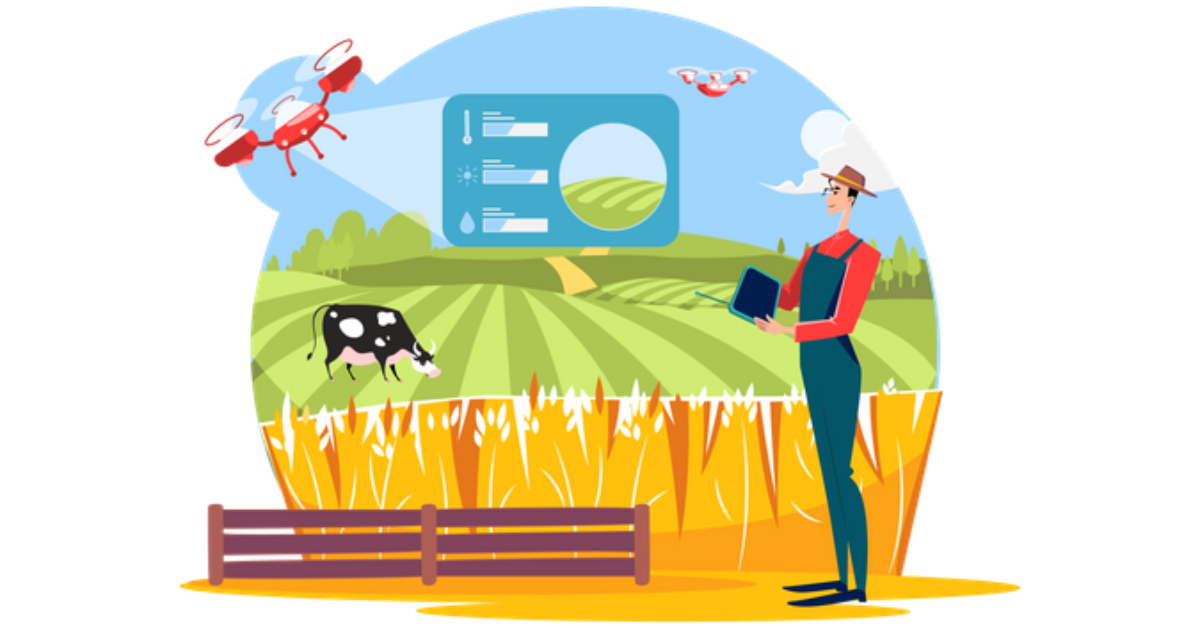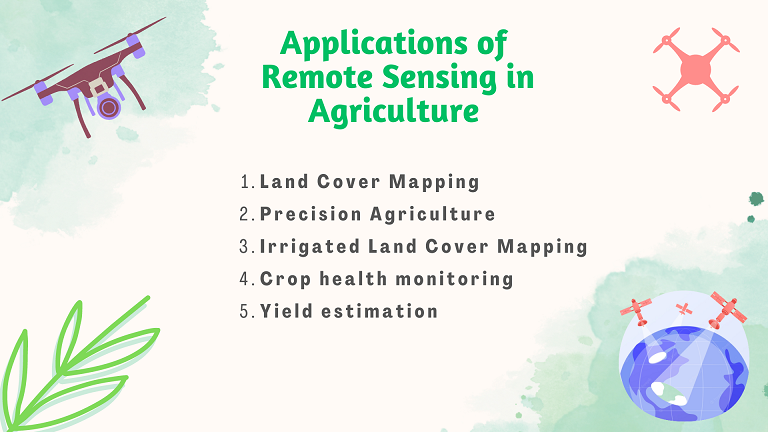Contact: +91 99725 24322 |
Menu
Menu
Quick summary: Unlock the potential of agriculture with the power of remote sensing! Discover the importance of remote sensing technology in agriculture, from monitoring crop health, optimizing resource allocation and carbon farming. Enhance your farming practices, maximize yields, and make data-driven decisions for sustainable and efficient crop management.

For years, farmers, food and feed processors have always wondered about the conditions of their crops. All thanks to modern day innovations that made it possible to remotely monitor everything through remote sensing technology. Remote sensing in agriculture is becoming increasingly important.
Space technology is particularly impacting agriculture and has the potential to transform how the sector operates by 2030. sector
Over the years, Remote sensing technology has proved it’s wide applicational importance ranging from monitoring of crop growth, identifying areas of stress, and to predict yields, optimizing crop management practices and improving productivity. It can also identify areas that require irrigation, fertilizer, or pesticide applications, reducing costs and minimizing environmental impact.
This blog post aims to understand and upheld the importance of remote sensing in agriculture, right from understanding what remote sensing is, a brief breakdown of types of remote sensing and their applications in farm management and smart agricultural practices. Further part we dive deep to understand the applicational aspects of remote sensing by understanding the real world applications of remote sensing and with the outlook towards the future.
Remote sensing is a technology that uses sensors to collect data about the Earth’s surface from a distance. In agriculture, remote sensing has become increasingly important as it provides valuable information that can help farmers make informed decisions.
There are several types of remote sensing that can be used in agriculture, including:
Increasing interest in Remote Sensing and various attempts have been made regarding the study of agriculture using remote sensing.

The use of remote sensing in agriculture can range from straightforward tasks like locating fields to complex ones like precision farming. Let’s give a quick look at how remote sensing has helped in agriculture:
The shifts in weather patterns brought on by climate change and global warming endanger crop output. Such changes have an impact on farmers as well as the market for crop insurance because they are difficult to foresee using conventional predictive algorithms. This increases the need for solutions for more accurate risk calculation and damage assessment. Remote sensing has been an breakthrough technology to predict and mitigate these risks.
Agriculture has a compelling role to play in decarbonization, as it has the potential to both emit and capture carbon. At the same time, a shift to more sustainable on-farm practices – and the adoption of technologies that can support these – is enabling farmers to leverage the carbon cycle, removing carbon from the atmosphere and sequestering it in the soil. Fortunately, technological advancement is remote sensing and satellite imagery are helping farmers and policy makers in understanding the soil carbon stocks.
On one hand where remote sensing is gaining scope in agriculture and has revolutionized the way we work. However, it is important to understand that technology is not infallible, and it has limitations. Few of the limitations of remote sensing have been listed below.
The future of remote sensing in agriculture looks promising, with new advancements and developments being made to enhance the technology’s capabilities. Remote sensing has already played a significant role in increasing crop productivity and sustainability, and it is expected to continue doing so in the future. One of the most promising prospects of remote sensing in agriculture is the integration of artificial intelligence (AI) and machine learning (ML) technologies. These technologies can help to automate the analysis of remote sensing data and provide real-time information to farmers. This would enable farmers to make more informed decisions about crop management such as identifying the best time to plant, water, and harvest crops.
Climate change is also a significant challenge facing the agricultural sector, and remote sensing can play a vital role in monitoring and adapting to changing weather patterns. With the help of remote sensing, farmers can identify areas of the field that are more prone to flooding or drought, allowing them to adjust their crop management practices accordingly.
The future of remote sensing in agriculture looks bright, and it is an exciting time to be involved in this rapidly evolving field.
TraceX has been helping companies with their Technology solutions. The platform provides seamless integration with existing technologies through API interfaces. NDVI Satellite imagery helps identify plant vigor within the field as well as the bare soil. Based on project requirements, farms can be configured for remote sensing. Soil health parameters like Soil pH, Soil organic carbon, NDVI and Soil moisture can be captured.
Remote sensing has already made a significant impact on agriculture, and the future looks even more promising. With the integration of AI and ML technologies, precision agriculture, disease and pest detection, climate change adaptation, and increased availability of data, remote sensing is likely to play an even more crucial role in increasing crop productivity and sustainability in the years to come.
